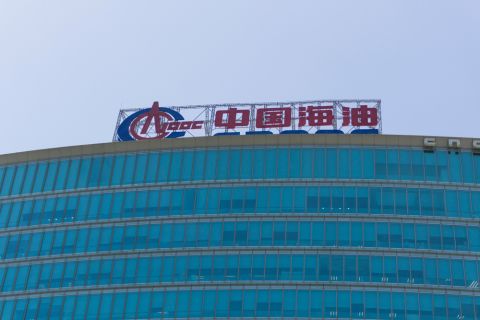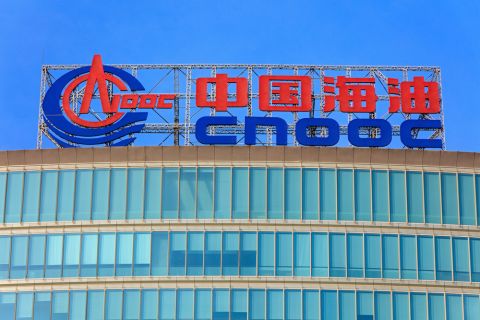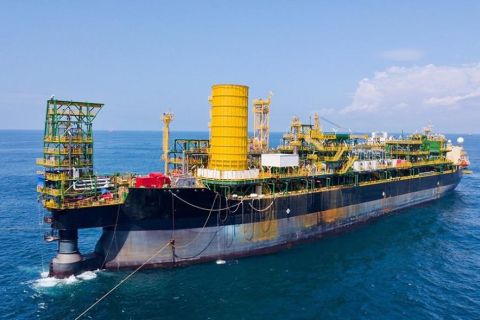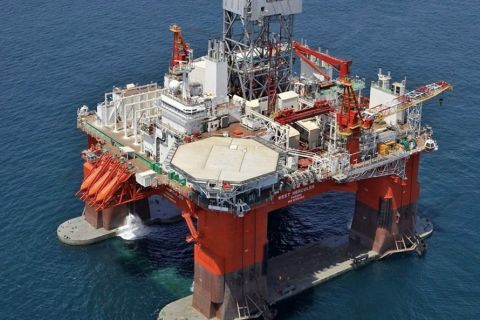Rick Eierdam, Williams, Houston, Texas;
and Stuart Sieg, MapFrame Corporation, Dallas, Texas
Recently, Williams successfully deployed MapFrame’s FieldSmart software as part of a project designed to create an integrated casual user interface (CUI). The mobile mapping and field automation solution leverages the GIS and document management system throughout the Williams enterprise.
The CUI allows a large user base to access vast amounts of data with little training or software expertise. It also enables a feedback loop between operations and engineering services that allows users to update data that has changed or is incorrect. Users (and indeed the whole company) derive several benefits from the ability to access and query GIS information, find prepared documents (such as alignment sheets), and view aerial photographs of their service territory all within a single, user-friendly, high-performance interface.
Like most pipeline companies, Williams’ interstate natural gas system has had a GIS of sorts for years. Initially, this was in the form of hand-drawn maps (later CAD-drawn) that consolidated pipeline data. Typical drawings were pipeline alignment sheets and pipeline DOT sheets.
Over the years, different types of GIS data was collected and assembled in a variety of unconnected electronic formats – databases, spreadsheets, etc. – in many of the functional areas (land, environmental, pipeline safety, pipeline integrity, and operations). As the GIS began to develop as a technology, the initial goal for GIS within Williams’ gas pipeline unit was to leverage this technology to connect all types of data – in short, to provide a single repository for our pipeline data, and to provide a suite of data maintenance and analysis tools.
Williams’ gas pipeline base software product is ESRI ArcGIS. It includes a database component (ArcSDE) that allows graphical data to be stored in an Oracle database along with the relational data (Williams’ database ~1TB). As the industry and technology evolves, more and more pipeline data and analysis tools are becoming commercially available. Regulatory demands, such as the Pipeline Safety Improvement Act of 2002, have driven operators to add more data about pipelines and broader system capabilities. These include ILI or smart pig data, physical inspections, HCA, PIR and risk modeling.
Pipeline Safety Improvement Act
The Pipeline Safety Improvement Act of 2002 requires that “Each operator of a gas pipeline facility shall conduct an analysis of the risks to each facility of the operator…” and that “An integrity management program required under paragraph (1) shall include, at a minimum, the following requirements:
- “The operator shall prioritize such facilities for assessment based on all risk factors….The operator shall ensure that assessments of facilities with the highest risks are given priority for completion…..”
- “A method for conducting an analysis on a continuing basis that integrates all available information about the integrity of the facility and the consequences of releases from the facility.”
In summary, the Pipeline Safety Improvement Act requires that gas pipeline companies collect and assess more information about their pipeline systems. For Williams and most other pipeline companies, this translates into more GIS end-users. More users are needed to collect, maintain and analyze data. These “casual” users – both field and office-based – are not the typical GIS end-user. They need an easy-to-use solution that works fast in both connected and unconnected environments. In addition, these users need an application that requires little training with the information being easy to retain – since they most likely will not use the application everyday.
The casual user interface project To satisfy the Pipeline Safety Improvement Act and improve overall operations, Williams’ gas pipeline unit needed to leverage GIS throughout the enterprise – to include “casual” office and field users. Williams developed the casual user interface project. The purpose of this project was to provide remote access, viewing, navigation, query, analysis and work capabilities to widely dispersed groups of employees in remote field operations and regional/headquarters office functions. These personnel needed access to accurate, up-to-date information and documents in GIS, and GIS-related databases, document management, and file servers through a spatially enabled interface. The “casual” user group was differentiated from “super” users of GIS and related applications by virtue of needing less functionality and simplified data, but requiring a user friendly and intuitive interface suitable for both occasional and emergency response use. The interface also needed to be easily accessible, reliable, and provide high performance for access and viewing.
Business objectives
The primary business objectives for the project were as follows:
1. Establish and maintain a feedback loop to improve data integrity. GIS pipeline and facility information are the core to which alignment sheets, integrity data, pipeline safety data, risk data and land data are referenced. The data integrity of this core is very important to the validity of the referenced systems, and their overall usefulness to the business.
In addition, a meaningful feedback loop facilitates communication between those who use the data and may notice problems or errors to those who can fix it and then quickly provide correct information back to the users. The process of getting as many employees involved in data integrity and ownership as possible helps achieve the goal of obtaining the greatest accuracy of data and value to the business.
Establishing a feedback loop would reduce liability associated with inaccurate information by simplifying, automating and removing time elements from the process of provision, red-lining, editing and re-provision of information. Morale, confidence and teamwork would be improved by having in place a process for data integrity improvement that works effectively across functions and geography.
2. Create a single source of accurate, timely data and documents. A terabyte of GIS information and hundreds of thousands of related CADD drawings of facilities and pipelines are important to operation of the business. Accurate information is required to troubleshoot, respond to emergencies and to operate the system. It is impossible to deliver and insure that everyone is using the same version of this information unless access to the version of record for this information is available to all that need it. Individuals in separate functional areas like Houston, Salt Lake City and division offices, operations departments across geography, and operations control groups need to be viewing the same data, diagram, or document during an emergency, while planning an outage, hot work, etc.
3. Leverage the value of information across work functions and geography. By leveraging existing investments in data and technology to more known and potential users of information, better and more informed decisions will be made, helping to plan/execute projects more efficiently across the business. Existing data in GIS and record drawing systems represents a substantial investment over the life of the assets. Leveraging this value to the extent possible is consistent with the business driver of maximizing utilization and being the lowest cost provider.
CUI project solution
To fulfill the business objectives of the casual user interface project, Williams implemented MapFrame’s mobile mapping and field automation FieldSmart software. The solution software leverages Williams’ ESRI GIS, integrates with their document management system, and provides an easy-to-use interface for end users.
In addition, aerial photographs of the Williams’ gas pipeline service territory are implemented into the mobile application. Key features of the the solution that powers the casual user interface include: compression, integration, incremental update process and ease-of-use. These features are discussed below.
Powerful compression. With an enormous amount of service territory, compression was very important to the success of the casual user interface project. Extracting the data out of its native format and compressing it into a highly compressed format place the entire ESRI GIS placed on each mobile device. Application speed issues are eliminated as the compression not only aids in fitting the data on the device, but also allows for a far more efficient way of presenting the data to the user, one that is fast and responsive.
Information and the application itself are always available to the users as there are no dependencies on a wireless (or wired) connection or server at any given point in time. Even if there were no wireless coverage, nor any server access, the application and data are self-contained on the mobile client and are able to be used 100% of the time.
Integration. The ability of the solution software to integrate files from the document management system, aerial photography and GIS data together in one application is key to the success of the casual user interface. By integrating back office systems with the GIS, the solution MapFrame creates a single source of accurate, timely information which: • Greatly simplifies the change management process. • Facilitates the transfer of knowledge among all employees. • Simplifies training by streamlining the way to access and use information. • Reduces mail, distribution and document reproduction costs by centralizing data in a common system. Reduces reliance on printed media individually and in library or file areas. • Reduces reliance on shadow information systems and provides venue for sharing of personal or functional area data caches. • Reduces regulatory liability and exposure to having disparate information on facilities located at operating, division and head office locations.
Incremental update process. Through MapFrame’s unique server solution, Field Flow Manager, updates are performed on a periodic basis by moving a small incremental delta file in a compressed format using either a wired or wireless network connection. Because the file is kept small to update systems, it can easily be performed using a wired or wireless connection of any kind. The incremental update process of the mobile mapping and field automation solution powering the casual user interface within Williams’ gas pipeline unit creates the feedback loop between the office and the field, or between those who use the data and may notice problems or errors and those who can fix it and then quickly provide correct information back to the users. The server solution ensures that everyone is working with the same version of maps and data at all times.
In addition, the server allows the end users to decide what portion of the Williams gas pipeline service territory they download. This is extremely important in the success of the project because of the amount of GIS data, aerial photography and related documents within their systems. Users only need download the information for their specific service territory. Often times, users in the office will download an entire region, while a field user may only need a much smaller territory.
Ease-of-use. Perhaps the most important feature of the the mobile mapping and field automation solution powering Williams’ gas pipeline casual user interface is its ease-of-use. The project was created specifically to provide GIS and related data to a wider selection of end-users without a lot of training or support. The solution software boasts an interface based on a simplified language of gestures, picklists, short-cut buttons and hotkeys. Data layers are available to be turned on or off for visibility on the map. Through the intuitive interface, end-users have the capability to view, navigate, query and redline GIS data with a few simple taps on the screen. Double clicking a facility or object on the map pulls up a list of map attributes. A route tool provides Williams’ gas pipeline field workers directions from point A to B, highlighting the route on the map and displaying turn-by-turn directions in text.
Number of features. A number of features are easily accessible within the application. These include alignment sheets, DRGs (USGS quad sheets), DOT sheets, system line diagrams and diagrammatic valve charts, CADD drawings, drawings related to compliance activities (pipeline emergency operations procedure maps, station flow diagrams, station fire emergency drawings, spill plans, meter station by-pass diagrams, station P&IDs), and system maps. And, aerial photographs of the Williams’ gas pipeline service territory are integrated into the mobile application, providing the field worker with a birds-eye view of a particular location and insight into the structures that surround the facility.
The casual user has the ability to make corrections to the map data, drawings and documents through a simple sketching palette consisting of redlining tools, colored pens and text entry capabilities. Redline updates are automatically sent back to the main office via the incremental update process.
Conclusion
The GIS data is the backbone of information so useful to field and office workers throughout the enterprise. By implementing MapFrame’s mobile mapping and field automation software, Williams created a casual user interface that allows more users to view and work with data contained in the GIS and back-office, establishes a feedback loop between operations and engineering, and creates a single source of accurate data and documents. Ultimately, the casual user interface has unlocked the full potential of GIS at Williams, and generated a measurable return on investment.
Acknowledgment
Based on a paper presented at the GITA 16th Annual GIS for Oil & Gas Conference, September 26, 2007, in Houston, Texas.
Recommended Reading
EOG: Utica Oil Can ‘Compete with the Best Plays in America’
2024-05-09 - Oil per lateral foot in the Utica is as good as top Permian wells, EOG Resources told analysts May 3 as the company is taking the play to three-mile laterals and longer.
CNOOC Makes 100 MMton Oilfield Discovery in Bohai Sea
2024-03-18 - CNOOC said the Qinhuangdao 27-3 oilfield has been tested to produce approximately 742 bbl/d of oil from a single well.
CNOOC Finds Light Crude at Kaiping South Field
2024-03-07 - The deepwater Kaiping South Field in the South China Sea holds at least 100 MMtons of oil equivalent.
Eni Finds 2nd Largest Discovery Offshore Côte d’Ivoire
2024-03-08 - Deepwater Calao Field’s potential resources are estimated at between 1 Bboe and 1.5 Bboe.
Orange Basin Serves Up More Light Oil
2024-03-15 - Galp’s Mopane-2X exploration well offshore Namibia found a significant column of hydrocarbons, and the operator is assessing commerciality of the discovery.





